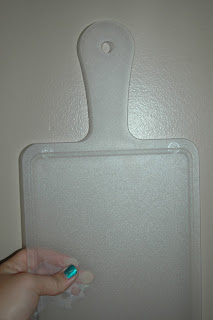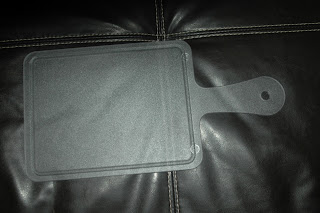Along with talking about color in class we've also had some out of class readings and in class videos that have helped build my view on "what is good design?". One of these was a reading excerpt from blackboard from three different books:
By Design by Ralph Caplan,
Toothpicks & Logos: Design in Everyday Life by John Heskett and
Understanding Design by Kees Dorst. I picked up a lot of key elements about design from these readings and I wanted to share just a few:
> Media and the world had made design into a lightweight thing because it can be put into categories that are understood (i.e. fashion design, interior design, etc.) but these parts of design should not be taken as a whole.
> If a product is designed well or poorly this has the possibility to effect our everyday life, so why are some products made badly? Sometimes cost is a factor.
> Many people have their own definition of what design is and it can be seen in so many ways because it has never cohered into just one unified profession.
> Design can be defined as: "The human capacity to shape and make our environment in ways without precedent in nature, to serve our needs and give meaning to our lives".
> The history of design can be described as a process of layering: more elements are added over time.
> Design as learning: go for your design then look at it with a critical eye. Propose & experiment. Learn.
> Design as a social process: design is an overlap of different designers' ideas as well as different fields of study.
> Design is a game with very few rules.
In addition to the readings we also watched a Don Norman video in class. It was actually really interested and wasn't too long. If you'd like to watch it too just click
here.
He discussed how if a product is excellently designed as well as makes the consumer happy that can be just as much of a successful design as if it's a usable product. For example: he purchased a gold juice maker that he never really uses to make orange juice because the acidity of the orange would actually ruin the gold on the juice maker. He however has it out for display because it's design is amazing:
He continues to talk about other fun products such as mini coopers which are good design because they are fun to drive and the design is fun. He states: "pleasant things work better".
He also discusses three different types of design: visceral, behavioral, and reflective.
1) Visceral: We have co adapted through biology to like bright colors, dislike loud sounds, dislike extremely hot or cold things, like symmetrical faces, etc. You can appeal to people as a designer through this with typography (red type to mean hot and blue type for calming or cool). Another example of this is you buy a pretty bottle of water or wine sometimes just to keep the bottle for decoration and not always for the liquid inside.
2) Behavioral: Automatic skill and behavior all about feeling in control with a product. For example, Don Norman had purchased a global knife that was so well made and worked so well he felt really in control while using it to cut things. Also, drivers of sports cars are a part of behavioral design because they feel in control while driving the car.
3) Reflective: The little voice in your head that says something is good or bad. An example of this is a Hummer. Owners like it because it attracts attention and you buy it because it's expensive and it attracts people.
Continuing with the design inspiration and information, I wanted to share some typography rules that our TA Daniel shared in class last week. I thought it was clever how they were put together.
The 10 Type Commandments
1 – Thou shalt use limited typfaces
2 – Thou shalt not use gradients in your typefaces
3 – Thou shalt not use papyrus
4 – Thou shalt kern properly
5 – Thou shalt remember not to use strokes over type
6 – Thou shalt not hypenate a headline
7 – Thou shalt make type easily legible on a color field
8 – Thou shalts not put type on a path
9 – Thou shalt not use dropshadows
10 – Thou shalt leave a widow
And last but not least I wanted to share some progress on my project. I'll forewarn you, however, that I'm going to be sharing a lot of the beginning stages of my project as in some rough, ROUGH, drafts. But, enjoy!
 |
Pictured above are my thumbnail sketches for my poster. Thumbnail sketches are
basically rough sketch ideas of what the design of my poster could look like. |
 |
| A brainstorming list of words that came to mind when I thought of Chacos. |
 |
One of my original (and very rough) poster ideas brought to life on 18 in x 24 in newsprint.
I like how I got the idea of motion of the shoes across but the line on this poster wasn't
executed well and the idea wasn't very visually captivating. In fact, it was pretty boring. |
 |
Here is my second rough draft 18 in x 24 in newsprint made up. In my head, I wanted
the outline of the chaco straps to be blown up more and expanded across the bottom and
I couldn't get that expressed with my size of printer. I did like, however, the idea of the
chaco strap becoming a "mountain" and the Chaco consumer climbing across the mountain
of Chaco in their shoes. Also, this one includes color. I used ideas from this poster in my
soon-to-be-final design. |




































